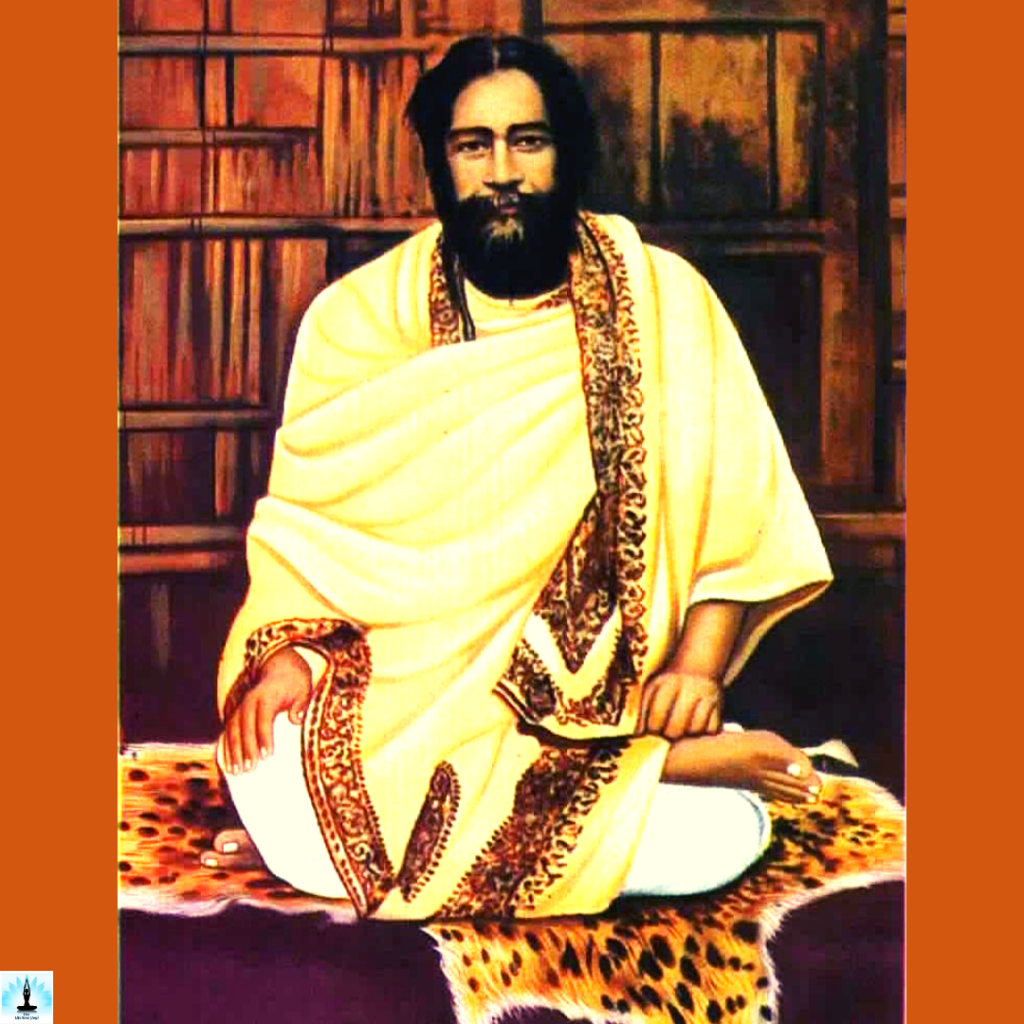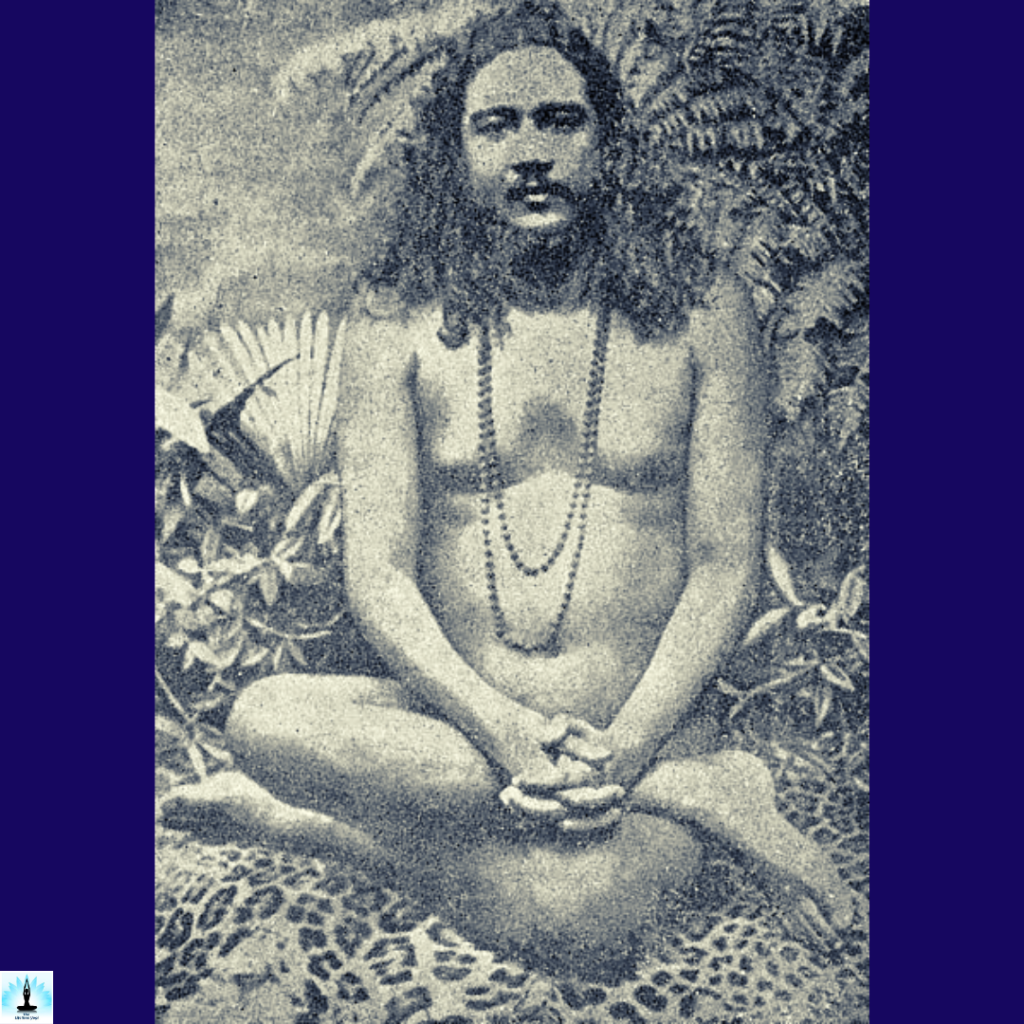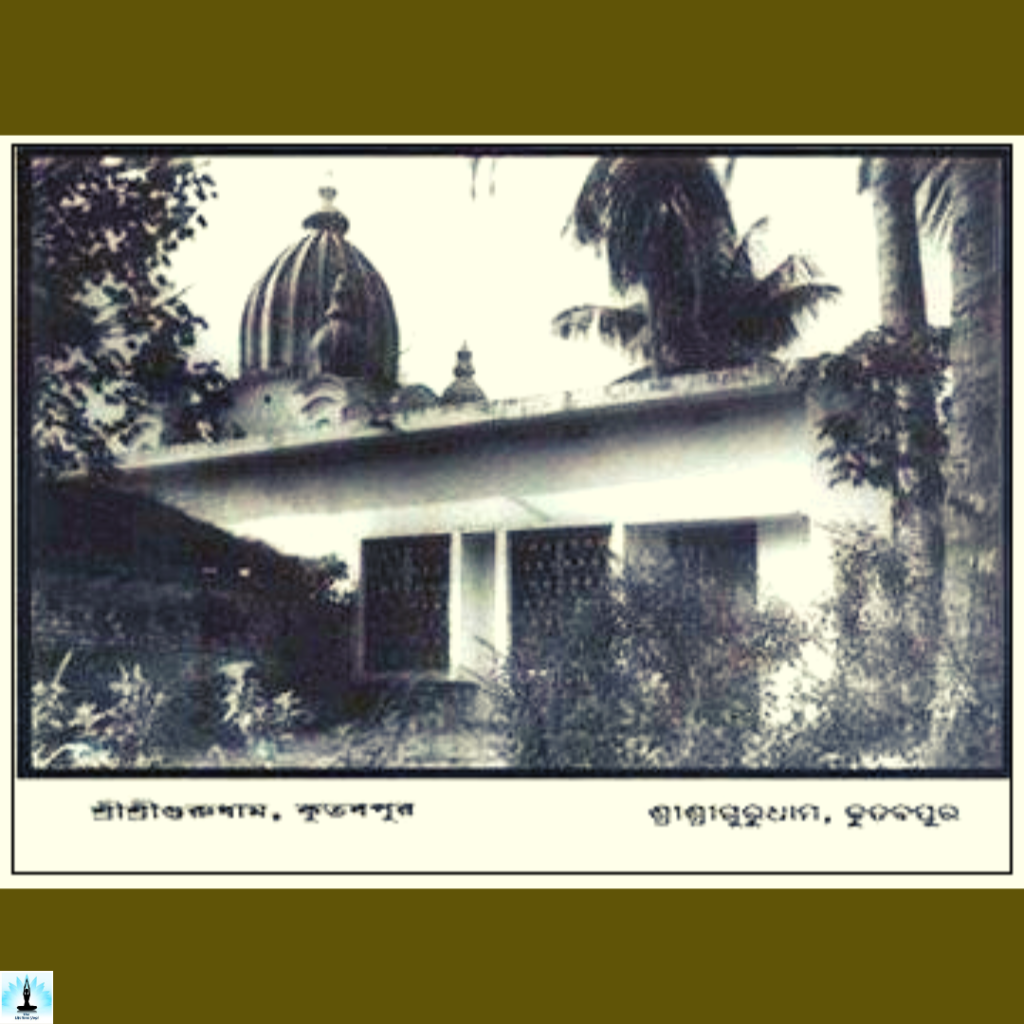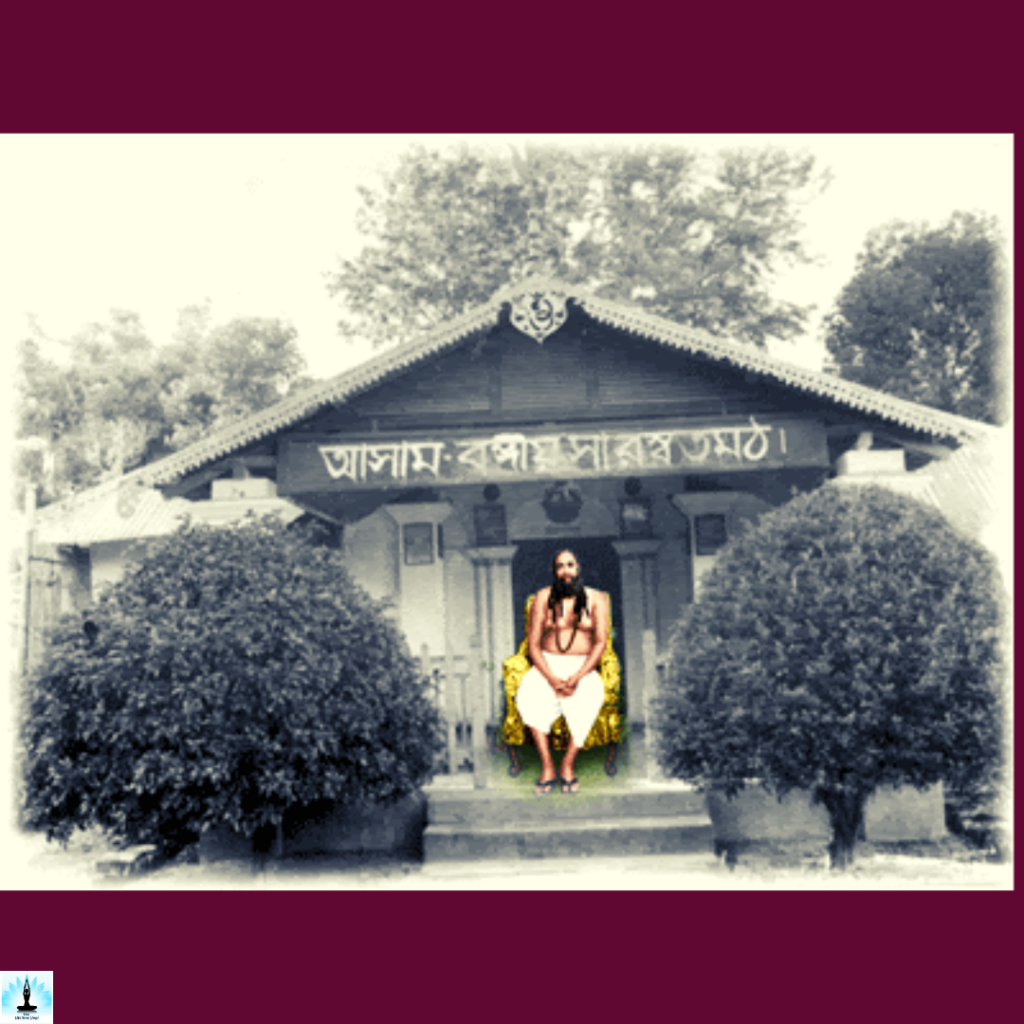India, with its rich history and geography of spiritual luminaries, has produced many revered souls who have illuminated the path to self-realization. Among them is the life story of Swami Nigamananda Paramahansa, a great Tantrik Guru whose life and teachings continue to inspire seekers on their spiritual journeys.

Nigamananda Paramahansa, a revered spiritual leader and Tantrik Guru of India, was born as Nalinikanta Chattopadhyay on August 18, 1880, in the town of Nadia, West Bengal. His life’s journey unfolded as a profound exploration of spiritual wisdom, dedicated to the upliftment of humanity.
Table of Contents
The Life Story of Swami Nigamananda Paramahansa
Early Life of Paramahansa Nigamananda
Nalinikanta displayed a deep spiritual inclination from a young age. After completing his formal education, he delved into the study of the ancient Indian scriptures and pursued a monastic life. His quest for knowledge led him to explore various spiritual paths, including the teachings of Tantra.
Spiritual Quest and Initiation of Nigamananda Paramahansa
One night, Nalinikanta experienced a remarkable dream involving a sadhu radiating a brilliant aura. Upon awakening, he found the sadhu standing beside his bed, who then handed him a bael leaf bearing a mantra before disappearing.

Seeking the meaning of the mantra, Nalinikanta consulted numerous individuals until he met Bamakhepa, a renowned tantrik from Tarapith, Birbhum district. Taking initiation (diksha) from Bamakhepa, Nalinikanta was instructed to chant the mantra for 21 days. Under Bamakhepa’s guidance, he had a physical darshan of Tara Devi, who appeared in the form of his wife.
This experience led him to seek knowledge of Advaita from a vedantic guru. In 1902, Nalinikanta sought a jnani guru and found Satchidananda Saraswati in Pushkar, Rajasthan. Realizing that Satchidananda Saraswati was the same sadhu from his dream, Nalinikanta became his disciple and adopted the name Nigamananda.
Satchidananda directed Nigamananda to undertake pilgrimages to the Char Dham, religious seats of significance in Hinduism, to understand their meaning. After these pilgrimages, he returned to the ashram.
Satchidananda reviewed Nigamananda’s journeys and emphasized the need for practical application of teachings. Nigamananda was urged to seek a guru for guidance in yogic principles. Subsequently, he experienced Nirvikalpa Samadhi on Kamakhya Hill in Gauhati, Assam, a site officially recognized in 2012.
In 1903, Nigamananda met “Sumeru Dasji” (Koot Hoomi Lal Singh or Kuthumi), a yogi guru, and mastered yoga under his guidance. After intense practice, in Poush 1904, Nigamananda achieved Savikalpa Samadhi. His quest for the advanced state of Nirvikalpa led him to Kamakshya, Guwahati, where followers believe he successfully entered this advanced yogic state. The Nirvikalpa Samadhi Sthal was inaugurated in 2012.
In 1904, in Kashi, goddess Annapurna appeared in a dream, informing Nigamananda that his knowledge was limited to the formless god. Accepting her challenge, he traveled to Gouri Devi, a Siddha yogini, to learn bhava sadhana.
Gouri Devi accepted him as a disciple and imparted the teachings of bhakti or prem, emphasizing the eternal nature of divine love in understanding the physical world as a transformation of god in bhava sadhana.

Nigamananda attained perfection, known as siddhi, through his dedicated practice of four distinct spiritual disciplines: tantra, gyan (knowledge), yoga, and prema (divine love). Drawing from these profound experiences, he authored five books in the Bengali language: “Brahamcharya Sadhana” focuses on celibacy practice, “Yogi Guru” delving into yogic principles, “Gyani Guru” exploring the path of wisdom, “Tantrika Guru” shedding light on the tantric tradition, and “Premik Guru” centered around the theme of divine love. Notably, Nigamananda is said to have entered the state of Nirvikalpa Samadhi, a transcendental and formless meditative state.
Mission and Teachings of Nigamananda Paramahansa
Taking the monastic name Swami Nigamananda, he dedicated his life to the service of humanity. His teachings emphasized the synthesis of spiritual practices, including yoga, meditation, and Tantrik rituals, to attain self-realization and ultimate union with the divine. Swami Nigamananda’s discourses were characterized by simplicity, accessibility, and a profound understanding of the human psyche.
Establishment of Ashrams
Swami Nigamananda founded several ashrams across India. These spiritual centers became hubs for seekers and devotees to engage in spiritual practices, receive guidance, and participate in community service.
In 1912, during the auspicious occasion of Akshaya Tritaya, a significant event unfolded with the establishment of Shanti Ashram in Kokilamukh, Assam. Sri Sri Thakur himself played a pivotal role in this endeavor, laying the foundation for the sacred space within the ashram known as Gurubrhama Gaadi.

This space served as a central gathering point for devotees and was envisioned as an inclusive sanctuary where individuals from diverse religious traditions could come together to partake in their spiritual practices. The creation of Gurubrhama Gaadi reflected Sri Sri Thakur’s visionary commitment to fostering unity and harmony among people regardless of their religious backgrounds.
As an ascetic holding the title of Saraswati within the Sringeri Math, Sri Sri Thakur bestowed the name “Saraswat Math” upon his ashram. This name not only paid homage to his own spiritual lineage but also expressed his deep reverence for the goddess Saraswati, symbolizing knowledge, wisdom, and learning. The ashram, with its inclusive ethos and homage to spiritual traditions, became a symbol of Sri Sri Thakur’s dedication to promoting unity and universal spirituality.
Social Reforms by Nigamananda Paramahansa
Swami Nigamananda Paramahansa, a revered spiritual leader, made significant contributions to social reform in addition to his spiritual teachings. One key aspect of his social initiatives was the promotion of education. Recognizing the transformative power of knowledge, Swami Nigamananda advocated for the establishment of educational institutions and actively encouraged literacy.

His vision aimed at empowering individuals with education, fostering a sense of enlightenment and self-sufficiency within communities. In his pursuit of holistic well-being, he also worked towards improving healthcare facilities, making them accessible to the community. Swami Nigamananda’s ashrams served as centers for providing healthcare services, addressing the vital aspect of physical well-being alongside spiritual growth.
Another crucial area of social reform championed by Swami Nigamananda was his unwavering commitment to unity and harmony among diverse communities. His ashrams were designed as inclusive spaces where individuals from different religious backgrounds could come together for spiritual practices. By promoting an environment of tolerance and mutual respect, he sought to dissolve religious and social barriers.
Swami Nigamananda’s teachings emphasized the essential principles of love, compassion, and selflessness as foundations for building a just and harmonious society. Through these social reforms, he left an enduring legacy that continues to inspire individuals and organizations dedicated to the betterment of society.
Literary Contributions of Nigamananda Paramahansa
A prolific writer, Swami Nigamananda authored several books and articles on spirituality, yoga, and the ancient Tantrik traditions. His literary works continue to inspire and guide seekers on their spiritual journeys.
Swami Nigamananda Paramahansa, in addition to his spiritual teachings, made significant literary contributions that enriched the spiritual and philosophical landscape. Authored in Bengali, his writings include works such as “Brahamcharya Sadhana,” “Yogi Guru,” “Gyani Guru,” “Tantrika Guru,” and “Premik Guru.”
These texts delve into various aspects of spiritual practice, knowledge, and the Tantrik tradition. Through his literary endeavors, Swami Nigamananda sought to disseminate profound insights, guiding readers on the path of self-realization and spiritual awakening.
His writings continue to serve as a source of inspiration for seekers, offering a deep understanding of the intricate aspects of yogic philosophy and the synthesis of diverse spiritual disciplines. The enduring relevance of Swami Nigamananda’s literary legacy underscores his commitment to imparting timeless wisdom and fostering the spiritual growth of humanity.
Karmic Theory According to Paramahansa Nigamananda
According to Nigamananda, karma is classified into three types: kriyaman, sanchita, and prarabdha. Kriyaman is the enjoyment of the results of one’s labor while alive, sanchita is accumulated karma experienced after death but before enjoyment, and prarabdha involves enjoying accumulated karma after rebirth. Through the practice of sadhana, one can mitigate the effects of kriyaman and sanchita during their lifetime, but prarabdha remains unaffected.
Individuals driven by worldly ambitions are destined to undergo the continuous cycle of birth and death. The jivatma, or individual soul, departs the physical body and traverses the spirit world or pret lok (ghost world).
After experiencing karmic effects, it returns to the physical world with a new body to fulfill desires from its previous incarnation. The mechanism by which it transitions between these worlds remains a mystery. Yogis, through their heightened perception, can unravel this mystery and reveal the past sanskaras (impressions) of the jiva (individual soul).
Legacy of Nigamananda Paramahansa
Swami Nigamananda’s legacy endures through the institutions and organizations he founded, carrying forward his teachings and principles. Devotees and followers continue to draw inspiration from his life, writings, and the spiritual practices he advocated.
Mahasamadhi of Swami Nigamananda
Swami Nigamananda attained Mahasamadhi, the ultimate merging with the divine, on November 29, 1935, leaving behind a legacy of spiritual wisdom and a path to inner awakening.
Swami Nigamananda Paramahansa remains a revered figure in the tapestry of India’s spiritual heritage, remembered for his profound insights, humanitarian contributions, and the timeless teachings that continue to guide spiritual seekers on their quest for enlightenment.
Frequently Asked Questions (FAQs) on Swami Nigamananda Paramahansa
1. Who was Swami Nigamananda Paramahansa?
Swami Nigamananda Paramahansa, originally named Nalinikanta Chattopadhyay, was a revered spiritual leader and Tantrik Guru in India. Born on August 18, 1880, in Nadia, West Bengal, he dedicated his life to spiritual teachings and service to humanity.
2. What were the key spiritual disciplines practiced by Swami Nigamananda?
Swami Nigamananda practiced various spiritual disciplines, including Tantra, Gyan (knowledge), Yoga, and Prema (divine love). His teachings emphasized the synthesis of these practices for self-realization.
3. How did Swami Nigamananda establish his ashram, Shanti Ashram?
In 1912, on the auspicious occasion of Akshaya Tritaya, Swami Nigamananda laid the foundation of Shanti Ashram at Kokilamukh, Assam. Within the ashram, he founded the Gurubrhama Gaadi, a sacred space for devotees to gather and engage in spiritual practices.
4. What is the significance of Gurubrhama Gaadi in Shanti Ashram?
Gurubrhama Gaadi served as a central focal point within Shanti Ashram, designed to be an inclusive sanctuary where individuals from various religious traditions could come together for spiritual practices. It reflected Swami Nigamananda’s commitment to promoting unity and harmony.
5. How did Swami Nigamananda’s spiritual journey unfold?
Swami Nigamananda experienced transformative visions, including a dream where he received a mantra from a sadhu. He sought guidance from Tantrik Guru Bamakhepa and later took initiation from Satchidananda Saraswati. His spiritual journey included pilgrimages, experiences of Samadhi, and encounters with revered gurus.
6. What is the significance of the name “Saraswat Math” given to the ashram by Swami Nigamananda?
Affiliated with the title of Saraswati under the Sringeri Math, Swami Nigamananda bestowed the name “Saraswat Math” upon his ashram. This name honored his spiritual lineage and expressed reverence for the goddess Saraswati, symbolizing knowledge, wisdom, and learning.
7. Did Swami Nigamananda achieve Nirvikalpa Samadhi?
Yes, Swami Nigamananda is believed to have achieved Nirvikalpa Samadhi, a profound meditative state, at Kamakhya Hill in Gauhati, Assam. The place where this samadhi was experienced has been officially recognized.
8. Who were some of the gurus that influenced Swami Nigamananda’s spiritual journey?
Swami Nigamananda took initiation from Tantrik Guru Bamakhepa and later from Satchidananda Saraswati. He also sought guidance from a yogi guru named “Sumeru Dasji” (Koot Hoomi Lal Singh or Kuthumi) and learned yoga under his mentorship.
9. What literary contributions did Swami Nigamananda make?
Swami Nigamananda authored several books in Bengali, including “Brahamcharya Sadhana,” “Yogi Guru,” “Gyani Guru,” “Tantrika Guru,” and “Premik Guru.” These works covered various aspects of spiritual practice and wisdom.
10. How is Swami Nigamananda’s legacy honored today?
– Swami Nigamananda’s legacy is honored through the institutions and organizations he founded, such as the Nigamananda Math. His teachings continue to inspire spiritual seekers, and the places associated with his spiritual experiences, like Nirvikalpa Sidhi Sthal, are recognized and revered.
References
- Moni Bagchee (1987). Sadguru Nigamananda: a spiritual biography. Assam Bangiya Saraswat Math. p. 43. Retrieved 9 June 2011.
- Banik, Nandadulal (2012). “Paramahansha, Nigamananda”. In Islam, Sirajul; Jamal, Ahmed A. (eds.). Banglapedia: National Encyclopedia of Bangladesh (Second ed.). Asiatic Society of Bangladesh.
- Paramahamsa Prajnanananda (15 August 2006). My Time with the Master. Sai Towers Publishing. pp. 25–. ISBN 978-81-7899-055-2. Retrieved 18 March 2011.
- Sher Singh; S. N. Sadhu (1991). Indian books in print. Indian Bureau of Bibliographies. p. 572. ISBN 978-81-85004-46-4. Retrieved 2 April 2011.
- Glory of India. Sadguru-Nigamananda. Motilal Banarsides. 1987. p. 98. Retrieved 16 July 2013.
- ^ Prof. Shrikant Prasoon (28 July 2009). Indian saints and sages. Pustak Mahal. p. 57. ISBN 978-81-223-1062-7. Retrieved 1 April 2011.
- ^ Sri Chinmoy (January 1997). Jardin Del Alma. Editorial Sirio, S.A. pp. 119–. ISBN 978-84-7808-230-8.
- Mohan Lal (1 January 2006). The Encyclopaedia Of Indian Literature (Volume Five (Sasay To Zorgot). Sahitya Akademi. pp. 3961–. ISBN 978-81-260-1221-3. Retrieved 18 March 2011.
- Prafulla Chandra Bhanja Deo; Jitāmitra Prasāda Siṃhadeba (2007). A Tantric scholar, and the British wrath on Bastar State: historical documentation relating to Rajkumar Prafulla Chandra Bhanja Deo, and Swami Nigamananda Saraswati. Punthi Pustak. pp. 4, 13, 20. ISBN 978-81-86791-66-0. Retrieved 9 June 2011.
- Chandra Bhanu Satpathy (1 July 2001). Shirdi Sai Baba and other perfect masters. Sterling Publishers Pvt. Ltd. pp. 717–. ISBN 978-81-207-2384-9. Retrieved 1 April 2011.
